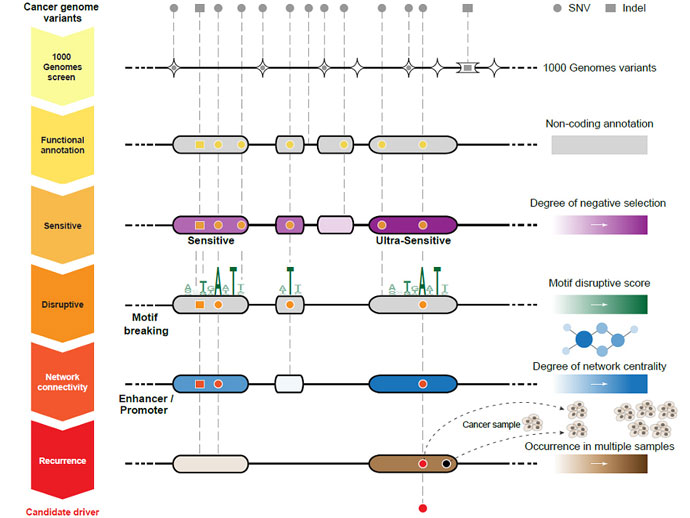Science:科学家在“垃圾DNA”中发现潜在癌症病源
| 导读 |
人类基因组中仅有 1% 到 2% 的是负责蛋白质编码的基因,其余非编码区域早先被认为是毫无用处的“垃圾 DNA”。但是,美、英等国研究人员最近在这个“垃圾”区域中找到近百个乳腺癌与前列腺癌的潜在“导火索”,显示了研究“垃圾 DNA”对了解癌症的重要性。
美国耶鲁大学、英国韦尔科姆基金会桑格研究所(Wellcome Trust Sanger ... |

人类基因组中仅有 1% 到 2% 的是负责蛋白质编码的基因,其余非编码区域早先被认为是毫无用处的“垃圾 DNA”。但是,美、英等国研究人员最近在这个“垃圾”区域中找到近百个乳腺癌与前列腺癌的潜在“导火索”,显示了研究“垃圾 DNA”对了解癌症的重要性。
美国耶鲁大学、英国韦尔科姆基金会桑格研究所(Wellcome Trust Sanger Institute)等机构的研究人员3日在《科学》杂志上报告说,随着个人基因组测序的成本直线下降,进行测序的人数迅速增加,解读他们基因组中的突变、尤其是非编码区的突变,已成为当前医学界面临的挑战。
研究人员利用大型国际科研合作项目“千人基因组项目”获得的基因变异数据,结合另一个国际合作项目“DNA 元素百科全书(ENCODE)”的信息,开发出一种新方法,在“垃圾 DNA”中筛选可能导致癌症的突变,也就是癌症的潜在“导火索”。
参与研究的耶鲁大学博士生傅垚表示,此前的癌症研究主要关注基因,但最新研究发现,非编码序列的突变也可导致癌症。这改变了人们对癌症的认识,也激发了科学家对非编码序列研究的热情。
傅垚等人发现,“垃圾 DNA”中一些序列像基因一样在人群中很少突变,受到很强的选择压力,这些序列因此被称为“超敏感”区域。她说,一般而言,发生在这些区域的突变更可能具有危害性,所以这一发现能帮助癌症研究人员缩小研究范围,加快对癌症非编码序列的研究。
研究人员将上述筛选致癌突变的方法,应用到90名乳腺癌或前列腺癌患者的基因组测序数据中,结果在“垃圾 DNA”中找到近百个可能的致癌“导火索”。其中,位于“超敏感”区域一个碱基的变化,有可能对乳腺癌的发展造成重大影响。
傅垚说,对非编码区的研究能帮助人们全面了解癌症的起因和发展,并将有助于癌症药物的开发。 (转化医学网360zhyx.com)
原文检索:
Integrative Annotation of Variants from 1092 Humans: Application to Cancer Genomics
Plummeting sequencing costs have led to a great increase in the number of personal genomes. Interpreting the large number of variants in them, particularly in noncoding regions, is a current challenge. This is especially the case for somatic variants in cancer genomes, a large proportion of which are noncoding.Prioritization of candidate noncoding cancer drivers based on patterns of selection. (Step 1) Filter somatic variants to exclude 1000 Genomes polymorphisms; (2) retain variants in noncoding annotations; (3) retain those in “sensitive” regions; (4) prioritize those disrupting a transcription-factor binding motif and (5) residing near the center of a biological network; (6) prioritize ones in annotation blocks mutated in multiple cancer samples.

来源:bio360
 腾讯登录
腾讯登录
还没有人评论,赶快抢个沙发